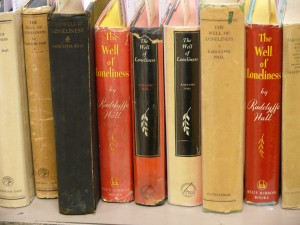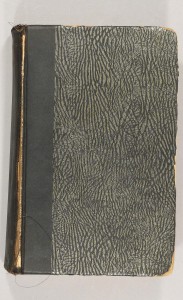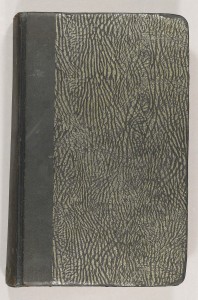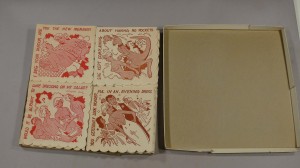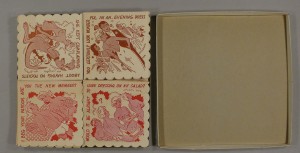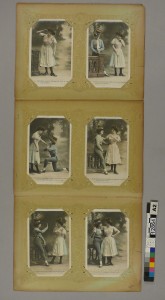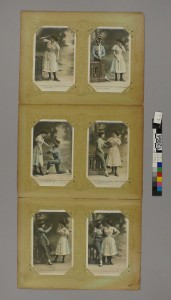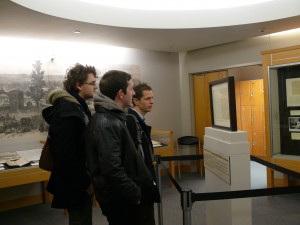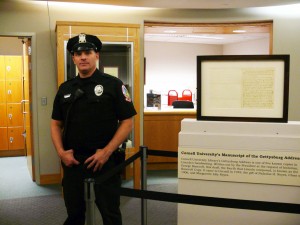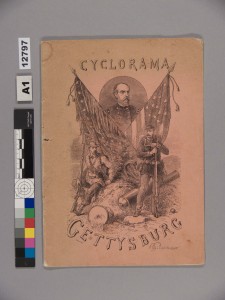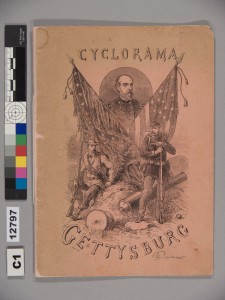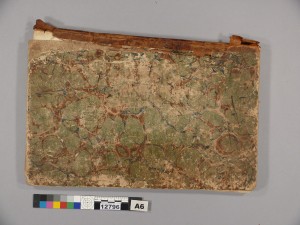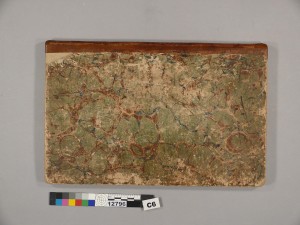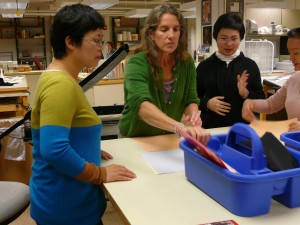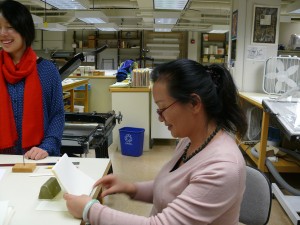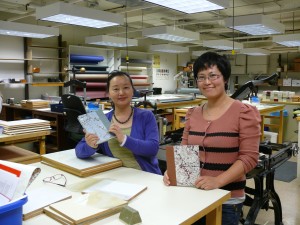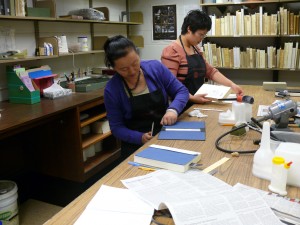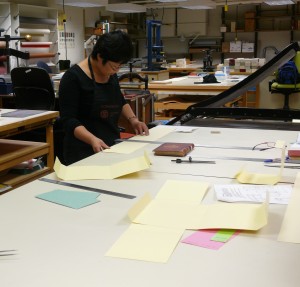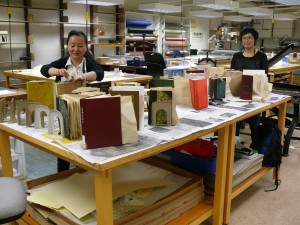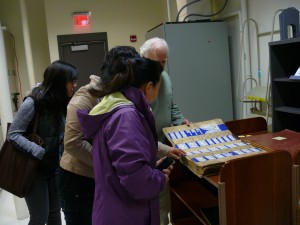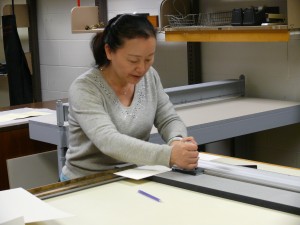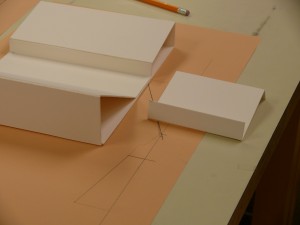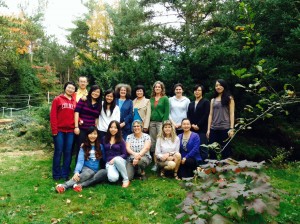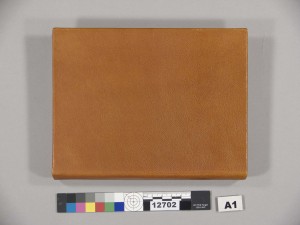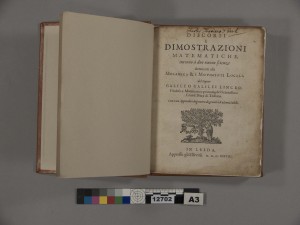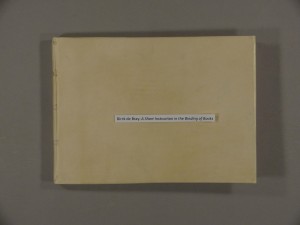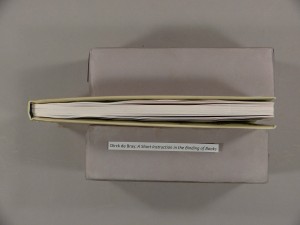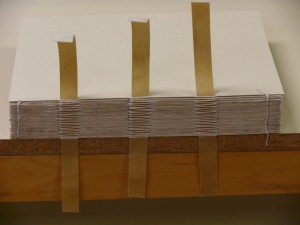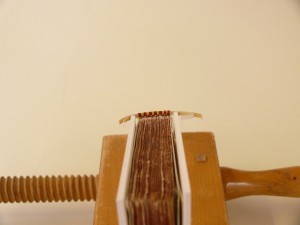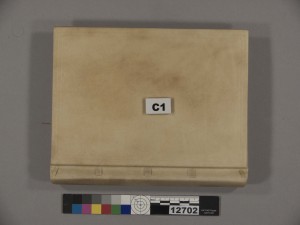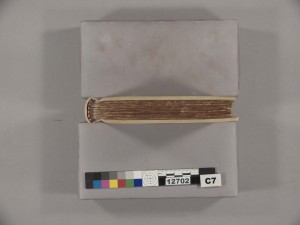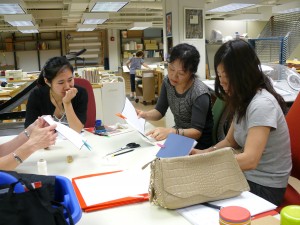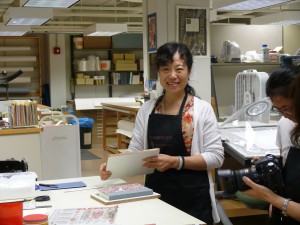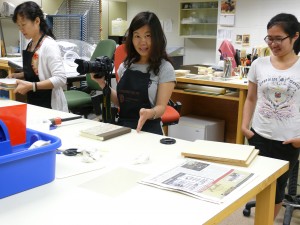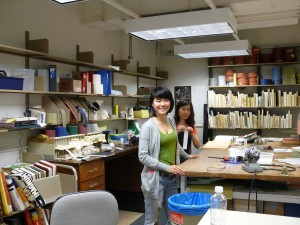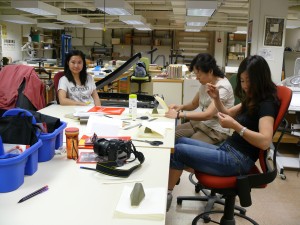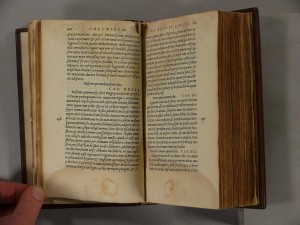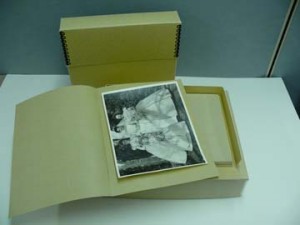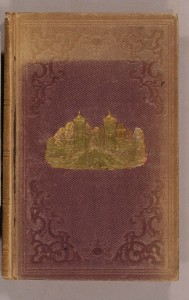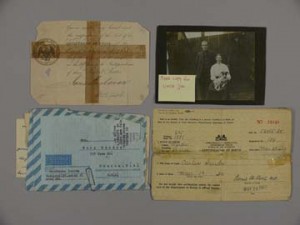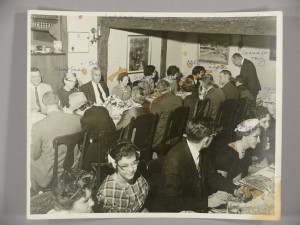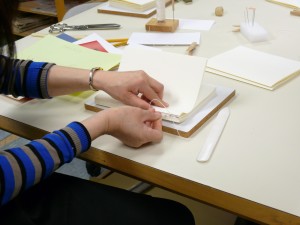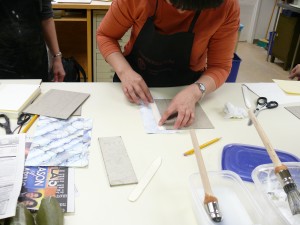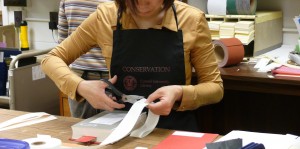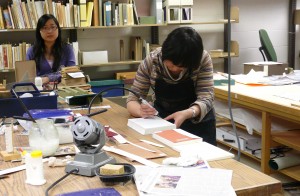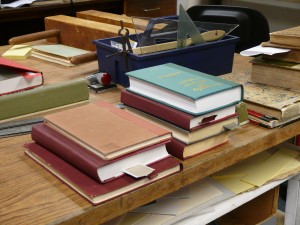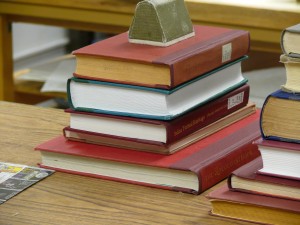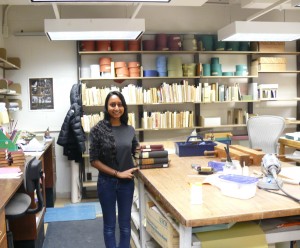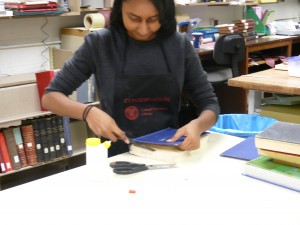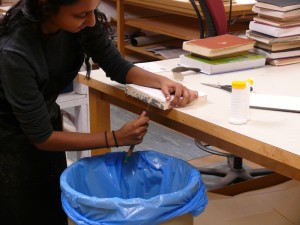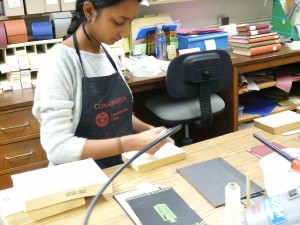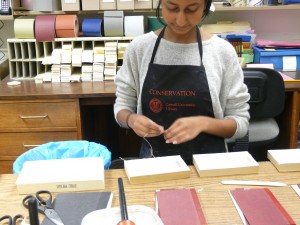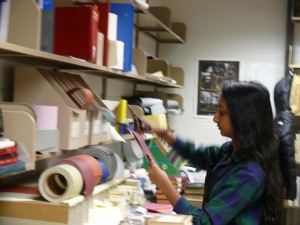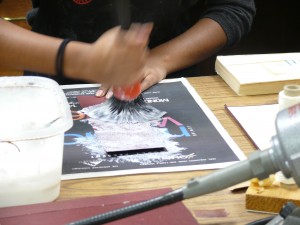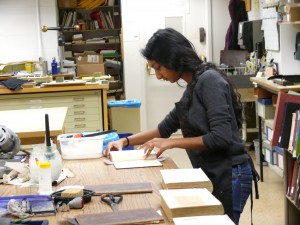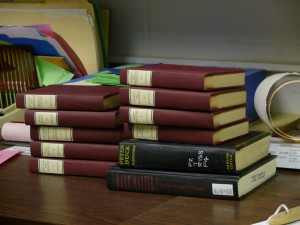by Michele Brown
Kelly and Lucy have completed their internship in conservation and will spend another week visiting Cornell libraries and Ithaca sights.
The internship program provides both hands-on experience and lectures in preservation theory and techniques. These can be complicated concepts to convey and we have relied on native Chinese speakers in the Cornell community to help us communicate. Four students and a library collection assistant have served as translators for our visiting interns.
Yun Peng (Penny) will receive her M. Eng. in Electrical Engineering from Cornell in May. Before coming to Cornell, she received her B.S. in Electrical Engineering from Purdue University.
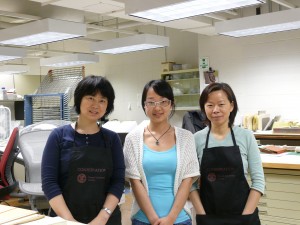
After graduation she will be employed as a Researcher in the Electric Power Research Institute in Beijing. Penny was at first attracted to being a translator for our intern program because she saw it as an opportunity to meet professionals from some of the top universities in China. While translating for the first 2 interns she also discovered that book conservation is very interesting. For her, translating is a good way to use her knowledge of English. “Helping the interns to communicate gives me a sense of achievement.”
Xuejiao Yang (Snow) was born in Beijing and grew up in Malaysia.
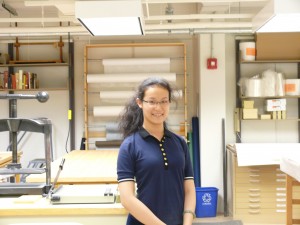
She received a B.S. in Electrical Engineering from the University of Washington in Seattle, and in May she will receive an M. Eng. in Electrical Engineering from Cornell. In September she will begin a position for the International Engineering Company in Beijing. She has enjoyed translating because she enjoys learning about another subject outside of her area of expertise. Translation skills will also help in her future work which will involve negotiating with companies outside of China. Snow is also fluent in Malay, plays the violin and piano, and enjoys ballet.
Venna Wang is a sophomore biological sciences major with a concentration in microbiology in the College of Agriculture and Life Sciences (CALS).
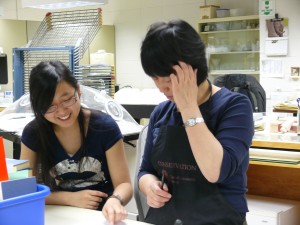
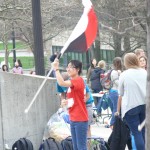
She grew up in Queens, and she enjoys music and art She “plays the flag” in the Cornell marching band. Venna enjoys translating because “it’s fun”, and she’s been happy to learn more about books, which she discovered are structurally a lot more complicated than she had realized.
Tianwang Liu is a freshman economics major in College of Arts and Sciences.
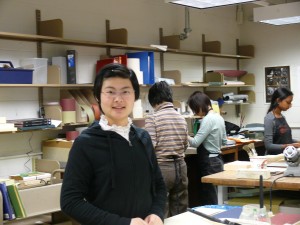
She is from Shandoung Province in China and enjoys singing, playing the piano, and playing the Guzheng. She watches movies to relax during study breaks. When we asked her what she enjoys most about translating she said, “As a student, working for the preservation department opens a new world for me, because instead of only reading books, I can know how books are made and repaired. It is amazing!”
Jing Carlson works as a collection assistant at the East Asian Collection (Wason) of the Kroch Library.
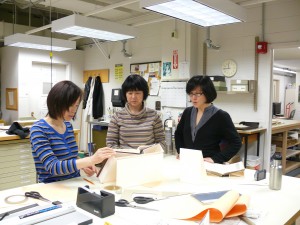
In the Cornell library system her main responsibilities include doing collection administrative management, assisting the curator to develop the collection, and coordinating with other units.
Jing is also an active participant in Cornell’s East Asia Program’s outreach activities. As an educator for the East Asia Program she has taught members of the Ithaca community about calligraphy, Chinese art, cooking, and language. Jing has also worked as a translator on campus and for the Ithaca City School District as well as the Racker Center. Her current translating work builds on the experience she had while still living in China doing Chinese- Japanese translation.
Jing moved to the United States from Beijing in the 1990s. She loves art, cooking, hiking and has an interest in residential architecture and fengshui design. She has been living in Ithaca since 2000. She enjoys family life here with her two sons and husband.
Jing has found time during her working hours to fill in when Penny, Snow, Venna and Tianwang have had scheduling conflicts.
We will miss Penny and Snow, but we look forward to working with Venna and Tianwang in the fall. We will rely on Jing as a resource for the next 2 interns from China who will arrive on May 13.
